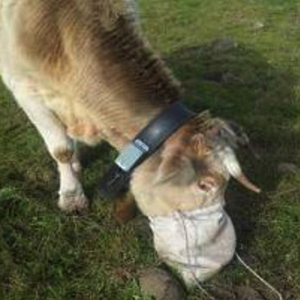Kernel density estimation analyses based on a low power-global positioning system for monitoring environmental issues of grazing cattle

Published:25 March 2022
Abstract Views: 1265
PDF: 592
HTML: 77
HTML: 77
Publisher's note
All claims expressed in this article are solely those of the authors and do not necessarily represent those of their affiliated organizations, or those of the publisher, the editors and the reviewers. Any product that may be evaluated in this article or claim that may be made by its manufacturer is not guaranteed or endorsed by the publisher.
All claims expressed in this article are solely those of the authors and do not necessarily represent those of their affiliated organizations, or those of the publisher, the editors and the reviewers. Any product that may be evaluated in this article or claim that may be made by its manufacturer is not guaranteed or endorsed by the publisher.
Similar Articles
- Simona M.C. Porto, Alessandro D'Emilio, Giovanni Cascone, On the influence of the alternation of two different cooling systems on dairy cow daily activities , Journal of Agricultural Engineering: Vol. 48 No. 1 (2017)
- Alessandro D'Emilio, Simona M.C. Porto, Giovanni Cascone, Marco Bella, Marco Gulino, Mitigating heat stress of dairy cows bred in a free-stall barn by sprinkler systems coupled with forced ventilation , Journal of Agricultural Engineering: Vol. 48 No. 4 (2017)
- Gabriele Mattachini, Elisabetta Riva, Francesca Perazzolo, Ezio Naldi, Giorgio Provolo, Monitoring feeding behaviour of dairy cows using accelerometers , Journal of Agricultural Engineering: Vol. 47 No. 1 (2016)
- Lorenzo Leso, Maurizio Uberti, Wasseem Morshed, Matteo Barbari, A survey of Italian compost dairy barns , Journal of Agricultural Engineering: Vol. 44 No. 3 (2013)
- Gabriella Impallomeni, Francesco Barreca, Agrivoltaic systems towards the European green deal and agricultural policies: a review , Journal of Agricultural Engineering: Vol. 56 No. 1 (2025)
- Valentina Giovenzana, Stefano Baroffio, Roberto Beghi, Andrea Casson, Alessia Pampuri, Alessio Tugnolo, Diego De Filippi, Riccardo Guidetti, Technological innovation in the winery addressing oenology 4.0: testing of an automated system for the alcoholic fermentation management , Journal of Agricultural Engineering: Vol. 52 No. 4 (2021)
- Remo Alessio Malagnino, Performance analysis of photovoltaic plants installed in dairy cattle farms , Journal of Agricultural Engineering: Vol. 46 No. 2 (2015)
- Marzia Quattrone, Giovanna Tomaselli, Lara Riguccio, Patrizia Russo, Assessment of the territorial suitability for the creation of the greenways networks: Methodological application in the Sicilian landscape context , Journal of Agricultural Engineering: Vol. 48 No. 4 (2017)
- Dina Statuto, Giuseppe Cillis, Pietro Picuno, Analysis of the effects of agricultural land use change on rural environment and landscape through historical cartography and GIS tools , Journal of Agricultural Engineering: Vol. 47 No. 1 (2016)
- Yevgeny Beiderman, Mark Kunin, Eli Kolberg, Ilan Halachmi, Binyamin Abramov, Rafael Amsalem, Zeev Zalevsky, Automatic solution for detection, identification and biomedical monitoring of a cow using remote sensing for optimised treatment of cattle , Journal of Agricultural Engineering: Vol. 45 No. 4 (2014)
You may also start an advanced similarity search for this article.

 https://doi.org/10.4081/jae.2021.1323
https://doi.org/10.4081/jae.2021.1323 











